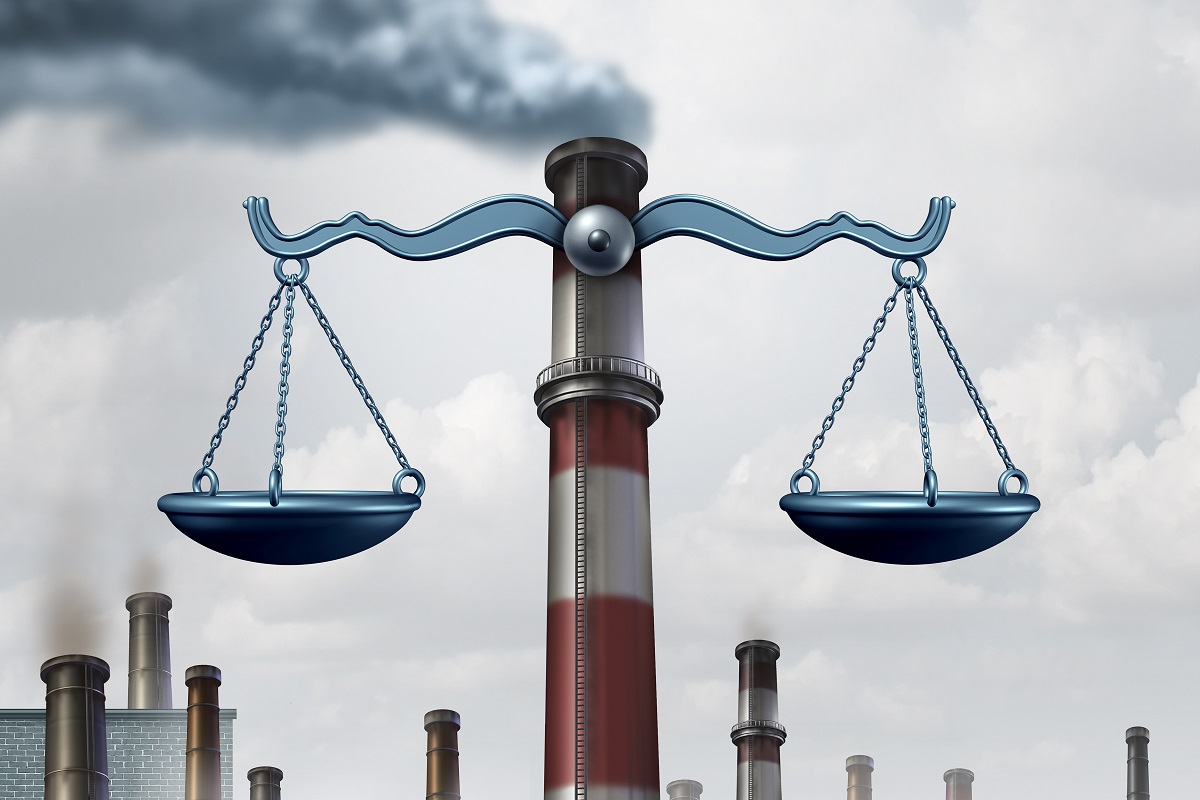Chicago may be the latest city to join other cities that have enacted cumulative pollution impact ordinances that address the impact of additional pollution from industrial operations seeking to open or expand operations “in already burdened low-income communities of color,” says the Chicago Sun Times.
Chicago Mayor Lori Lightfoot recently announced she was halting the review of General Iron’s metal-shredding relocation permit to the southeast side after agreeing to a request for more study on the impacts of the company’s operations from EPA Administrator Michael Regan.
“Substantial data indicate the current conditions facing Chicago’s southeast side epitomize the problem of environmental injustice, resulting from more than a half century of prior actions,” Regan says in a separate Chicago Sun Times article. “This neighborhood currently ranks at the highest levels for many pollution indicators.”
The hazards Regan identified include “fine particulate matter, toxic pollutants in the air that pose cancer risk, respiratory threats, proximity to traffic and hazardous waste sites, lead paint and wastewater discharges.”
As a result of Regan’s request, Lightfoot also ordered “her staff to a propose a ‘cumulative impact’ ordinance by the end of the year.”
Local environmental laws often lack “teeth,” according to Ana Baptista, an assistant professor at the New School in New York who has studied local environmental laws.
Effective Cumulative Impact Ordinances
The city of Newark, New Jersey, is credited with enacting an effective environmental justice (EJ) and cumulative impacts ordinance in July 2016, according to an article in the Government & Law Blog.
The city’s “Environmental Justice and Cumulative Impacts Ordinance specifically applies to applicants for major site plan approval from the Newark Central Planning Board or a variance from the Newark Zoning Board of Adjustment that are seeking approval for a Commercial, Light Manufacturing or Industrial Use project and requires one or more approvals or permits from the [EPA] or the New Jersey Department of Environmental Protection, or requires inclusion in the Essex County Solid Waste Management Plan,” the article says.
“Applicants with an Industrial Use must submit more detailed information,” the article continues. “For instance, they must provide a brief summary of pre-existing environmental conditions within a half-mile radius of the proposed project site and must detail the number of jobs the project will create. The form also requires developers to describe any efforts to avoid, minimize, and mitigate any pollution emissions or environmental impacts both during construction and during operation.”
The ordinance increased the city’s Environmental Commission role, giving it the opportunity to review and comment upon applications and the required Environmental Checklists.
Categories of EJ and Cumulative Impact Ordinances
Baptista’s study, “Local Policies for Environmental Justice: A National Scan,” published in February 2019, divides local EJ and cumulative impact policies into several categories:
- “Bans on specific types of polluting facilities typically sited in environmental justice communities [Bans]
- Broad environmental justice policies that incorporate environmental justice goals and considerations into a range of municipal activities [General]
- Environmental review processes applied to new developments [Reviews]
- Proactive planning targeted at future development to address environmental justice via comprehensive plans, overlay zones, or green zones [Proactive planning]
- Targeted land use measures that address existing sources of pollution, like amortization policies [Targeted]
- Enhanced public health codes that reach both existing and new sources of pollution that impact public health [Health codes]”
Bans
Bans are considered one of the most direct ways to prevent unwanted pollution. Local ordinances can prohibit or ban “specific land uses or industries deemed harmful to public health and the environment,” according to Baptista’s study. Although total bans can “be challenged in court by industries or overturned by states based on assertions that cities are preempted in regulating certain industries by state law; that the municipality’s ban interferes with interstate commerce; or that the ban represents a ‘taking’ of property, which then requires cities to compensate industries for the loss of economic value on their property. In many cases where cities have attempted to ban fossil fuel-related industries through their public nuisance codes, industries have mounted challenges using these arguments.”
The vast majority of bans have focused on processing, storing, or transporting fossil fuels, according to Baptista.
General EJ Policies and Programs
Fulton County, Georgia; New York City; and San Francisco have adopted broad EJ policies and programs.
“In 2017, New York City adopted legislation amending its Administrative Code to establish an Interagency Working Group and to design an environmental justice study. San Francisco instituted an Environmental Justice Program in 2000, with city staff and resources earmarked for a variety of programs, including a Community Health Plan, green space creation, and more than $12 million in community grants to nonprofit groups serving environmental justice areas.
“In Fulton County, Georgia, the Board of Commissioners voted to establish the Fulton County Environmental Justice Initiative in 2010,” according to Baptista’s study. “The county approved funding for an Environmental Health Planner position and began to collaborate with the Department of Health and Wellness on strategies to address public health issues using local tools (e.g., transportation, land use, solid waste disposal, water contamination, laws, ordinances, policies, and zoning). The Initiative has led to policy and planning changes such as an Environmental Justice Amendment to the Zoning Resolution in 2013, the Pipeline Amendment to the Zoning Resolution in 2014, and environmental justice content explicitly written into Fulton County’s Comprehensive Plan 2035.”
Reviews
Although cities have historically utilized review processes through zoning boards for applicants, the traditional methods were fraught with extreme pressure for economic development activities to increase city revenues. The new emphases include EJ requirements such as requiring EJ permits, public nuisance rejection clauses, environmental risk assessment reports, zoning restrictions whereby buffer zones are required between industrial and residential developments, and EJ checklists.
Proactive Planning
Master plans for future development have long been used to guide future development for cities and communities. In working to protect and improve EJ communities, cities are putting new tools in place in their proactive planning actions, such as creating more stringent development criteria in EJ areas.
“Going yet a step further than controlling cumulative pollution to affirmatively encouraging better economic development, Los Angeles and similar California communities have pioneered an innovative approach to environmental justice by designing a special ‘green zone’ designation for EJ communities,” according to Baptista’s study. “Green Zones are areas designated for improved public health and economic development through the prevention and reduction of existing burdens, targeting investments, attracting greener developments and the involvement of local residents.”
Targeting Existing Land Uses
Some targeting approaches cross over into the bans and public health approaches categories, such as banning existing uses and adopting moratoria on certain uses until other ordinances can be developed.
Other examples include amortization ordinances that eliminate “unwanted nonconforming uses” over time and pollution control annual registration fees, which incentivize “businesses and households to eliminate the use of outdated and hazardous equipment.”
Health Codes
“One of the ways that cities oversee public health is through the adoption of codes that enforce nuisance protections over things like noise, odor, dust and light,” Baptista’s study notes. “Prior to the passage of federal environmental laws like the Clean Air Act, many municipalities sought to curb these nuisances through public health codes that could shield residents from nearby industrial activities. Indeed, the Clean Air Act itself expressly recognizes the important role of local as well as state governments in addressing air pollution. Municipalities may choose to adopt and enforce health codes to protect residents from various air pollutants that cause or aggravate health issues such as asthma.”
As an example of an EJ health code, San Francisco passed an ordinance “to make enhanced ventilation mandatory in buildings within an air pollution exposure zone specifically as a result of advocacy by residents in EJ communities in close proximity to highway infrastructure.”
Locations with EJ Policies
|
Locality |
Types of Policies |
|
Austin, TX |
Proactive Planning |
|
Baltimore, MD |
Bans |
|
Camden City, NJ |
Reviews |
|
Chicago, IL |
Bans, Health Codes |
|
Cincinnati, OH |
Reviews |
|
Commerce, CA |
Proactive Planning |
|
Detroit, MI |
Health Codes |
|
Denver, CO |
Health Codes |
|
Erie, CO |
Health Codes |
|
Eugene, OR |
Proactive Planning |
|
Fulton County, GA |
Proactive Planning, Reviews, General |
|
Huntington Park, CA |
Targeted |
|
Los Angeles, CA |
Proactive Planning |
|
Los Angeles County, CA |
Proactive Planning |
|
Minneapolis, MN |
Proactive Planning, Targeted |
|
National City, CA |
Proactive Planning, Targeted |
|
Newark, NJ |
Reviews |
|
New York, NY |
General |
|
Oakland, CA |
Bans |
|
Portland, OR |
Bans |
|
Richmond, CA |
Health Codes |
|
San Francisco, CA |
General, Targeted, Proactive Planning, Health Codes, Reviews |
|
Seattle, WA |
Proactive Planning, Bans |
|
Washington, D.C. |
Proactive Planning, Targeted |
|
Whatcom County, WA |
Bans |
“Historically zoning codes and land use practices have had the effect of hardening disparities and expressing forms of institutional racism evident in the built environment,” Baptista says. “These processes continue to jeopardize the health and safety of communities of color and low-income communities throughout the country. If zoning and land use policies got us into this mess, they have the potential to get us out of it—to be harnessed effectively and affirmatively, to redress these impacts. Indeed, looking to zoning and land use policies to remedy local environmental injustices is critical, as state and federal environmental laws and regulations are limited in their ability to address the siting decisions that concentrate cumulative pollution burdens.”


